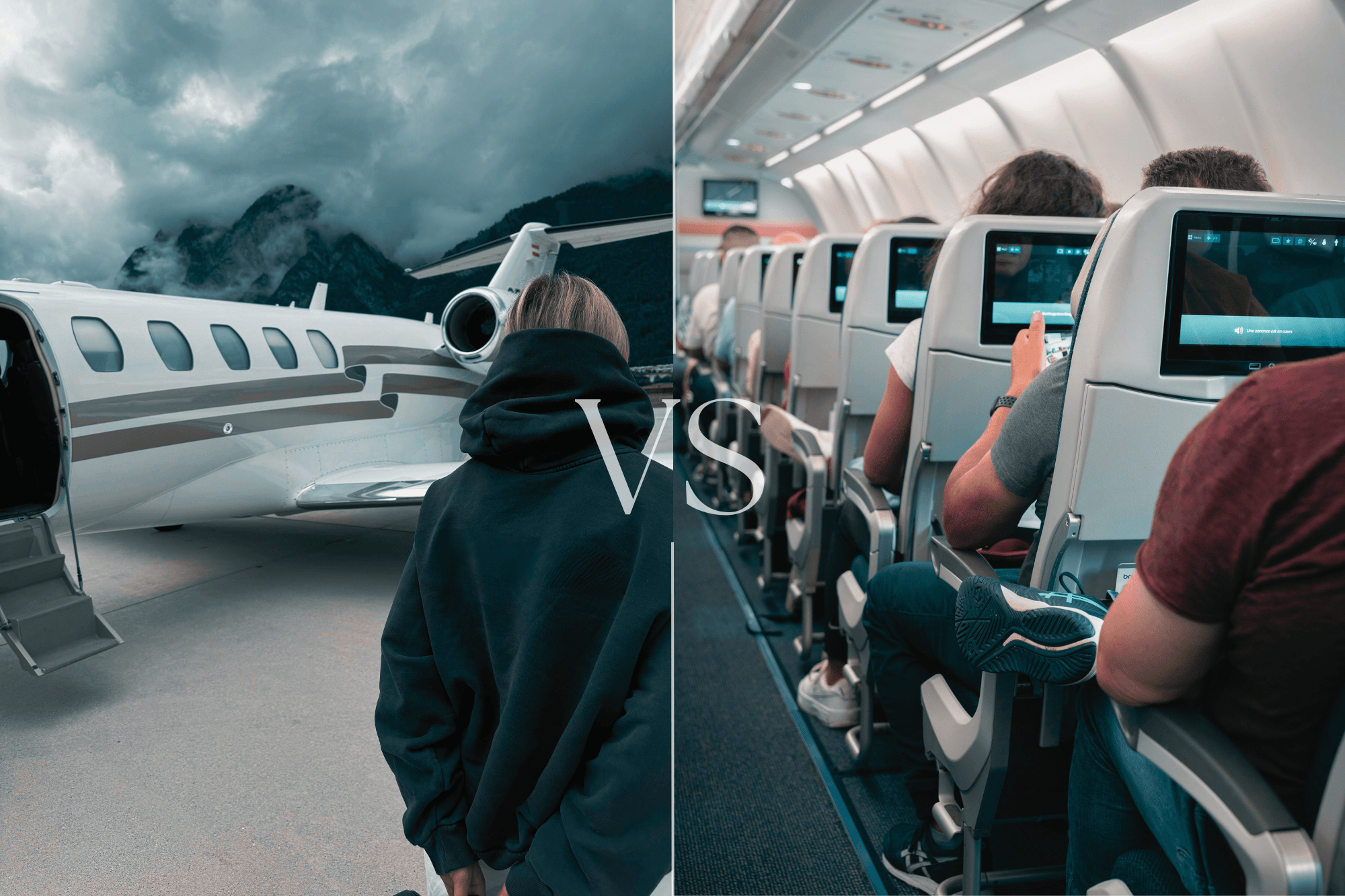The sight of a sleek private jet soaring through the sky often ignites a blend of awe and perhaps a touch of skepticism. Whispers of exorbitant costs and exclusive access tend to cloud the reality of private aviation, creating a barrier to understanding its true potential.
These prevalent private flight myths can obscure the genuine benefits and accessibility that private air travel offers in various circumstances.
This article aims to dismantle these misconceptions, providing factual insights into the accessibility, surprising cost-effectiveness in specific scenarios, and the undeniable value proposition of private flights. Let’s take a closer look and separate fact from fiction in the world of private aviation.
Understanding Private Flight Costs
One of the most enduring private flight myths is the assumption of an always astronomical price tag, instantly relegating it to the realm of the ultra-rich. While outright ownership of a private jet certainly represents a significant investment, the landscape of private aviation has evolved considerably. Today, a range of more accessible options exists, such as fractional ownership, jet cards, and on-demand charter flights.
Fractional ownership allows individuals or businesses to purchase a share in an aircraft, granting them access for a specific number of hours annually while sharing the operating costs. Jet cards, on the other hand, offer a prepaid block of flight hours on a particular type of aircraft, providing predictable pricing and flexibility. For those with less frequent needs, charter flights offer a pay-as-you-go solution, allowing you to book an entire aircraft for a specific trip.
Interestingly, for groups traveling together or for last-minute bookings to less-served destinations, the cost of a private charter can, in certain scenarios, become surprisingly comparable to multiple business class tickets on commercial airlines. When factoring in the significant value of time savings – avoiding lengthy airport queues and layovers – and the unparalleled flexibility in scheduling and destinations, the perceived cost barrier begins to erode. For instance, average hourly charter rates for a light jet can range from $3,000 to $5,000, but splitting this among a group of six business travelers might prove more economical and efficient than individual premium fares. Programs like NetJets and Flexjet offer various fractional ownership and jet card options with entry points tailored to different usage needs.
More Than Just Luxury: The Practical Benefits of Private Jet Travel
The perception of private jet travel as purely a luxury and a frivolous indulgence overlooks its significant practical benefits, particularly in the realm of business. The ability to conduct meetings in a private and uninterrupted environment in flight can drastically increase productivity. Teams can work collaboratively en route, maximizing their time and efficiency. For time-sensitive travel, especially when multiple destinations need to be reached in a single day, private aviation offers an unparalleled solution. Specialized equipment and personnel can be transported quickly and directly, proving invaluable in industries ranging from manufacturing to technology.
Beyond business, private aviation plays a crucial role in medical evacuations, providing rapid transport for critical patients to specialized care facilities. It also serves humanitarian purposes, enabling aid organizations to reach remote and underserved communities quickly. Studies on the impact of business aviation often highlight its positive correlation with increased executive productivity and overall business efficiency. Examples abound of industries, such as energy and pharmaceuticals, where private flights provide significant logistical advantages, enabling timely access to remote sites or the swift transportation of vital materials.
Safety and Security in Private Aviation: Rigorous Standards and Protocols
The myth that private flights are less safe than commercial airlines is unfounded. Private aviation operates under the same stringent regulatory oversight as commercial aviation, with bodies like the FAA in the United States and EASA in Europe setting rigorous safety standards. Private aircraft undergo strict maintenance schedules, and pilots are highly qualified and required to meet demanding training and certification criteria.
In terms of security, private terminals offer an enhanced level of privacy and security, allowing passengers to avoid the crowded public spaces of major airports. Furthermore, private flyers often have the ability to customize security measures to meet their specific needs. Safety statistics from aviation regulatory bodies consistently demonstrate that private aviation maintains high safety standards. The emphasis on meticulous maintenance and highly trained crews ensures a secure travel experience
Conclusion:
By debunking these common private flight myths, we reveal a more nuanced reality of private aviation. It’s not solely the domain of the ultra-wealthy, nor is it necessarily an inaccessible or frivolous option. In specific circumstances, private flights offer compelling advantages in terms of cost-effectiveness, accessibility to a wider range of destinations, enhanced productivity, and robust safety protocols. While environmental concerns are being addressed through ongoing innovation and sustainability initiatives, the practical benefits of private aviation for businesses, time-sensitive travel, and specialized needs are undeniable.
It’s time to look beyond the outdated stereotypes and consider the facts. If you’re seeking greater control over your travel, access to more destinations, and a more efficient and secure way to fly, explore the possibilities of private aviation. Contact a reputable charter provider or investigate fractional ownership and jet card options to discover how private flight can meet your specific needs.








